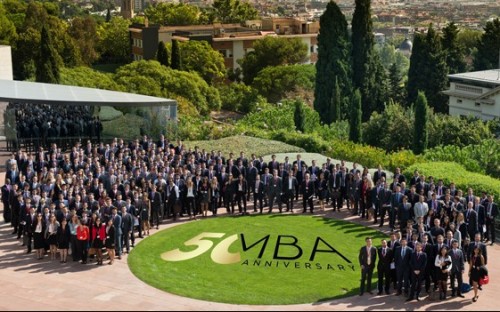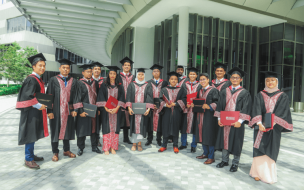The network that students form at business school is crucial to a satisfactory MBA experience. Given the fact that most of student life is spent around people – in class while learning, interacting in study groups, or during social and networking events – this should come as no surprise.
Top business schools have exactly the right people to make for an enriching experience. Branden Farley, a new MBA candidate at the Robert H. Lee Graduate School, part of the Sauder School of Business at the University of British Columbia, found it extremely easy to approach students.
He says: “The most compelling observation I made when I began the MBA program was the overwhelming desire shared among my new classmates to establish a learning culture. I quickly lost track of the number of inquiries I had into my [previous] experience, and insight.”
Renate Diggelmann, also from the Canadian business school, was amazed by the diversity and openness of her classmates. “I expected my peers to be more like the stereotype business people who only think about profit maximization and climbing the career ladder as quickly as possible,” she says.
“[But] I was pleased to learn that there are many critical thinkers and people with strong values other than money in my class.” It was also a pleasant surprise for her that “every class is taught with passion and the teachers love being in the classroom”.
Social and team-building events also play a big part in bringing students from different backgrounds and cultures together.
IESE Business School had an orientation week, which saw students placed in groups to compete against each other and explore Barcelona, the school’s Spanish base. Priyanka Bharadwaj learnt that endurance is going to be important during the MBA program.
She says: “While I was running around the streets of Barcelona with my team for over five hours contesting with the rest of my class to conquer the city, we realised that only patience and harmony within the team got us through the day, [or] else it would have been impossible to [make] good decisions when all of us were exhausted beyond imagination.”
Khalifa Al Hajeri, also an IESE MBA, found the campus extremely charming. He was even impressed with the synergy in the classes. “What I did not expect was the hands[-on] approach the university takes in leading its students through the MBA program,” he says.
The Tuck School of Business’ orientation, too, gave students a chance to get to know each other. “We were divided into groups and worked with local community businesses to help provide solutions to their pressing problems,” says Martins Anani, a new MBA student at the US business school.
“My team worked with a local community college, and it was wonderful to help and also to learn so much about the community.” He did things he had not done before, like playing tripod ice hockey and going to a toga party.
Not only the schools but the students themselves are taking initiative to meet their classmates. Michael Zafiropoulos from IESE Business School in Spain says: “Many of the students have been proactive in planning social events – over and above all the mandatory work. There have been many gatherings to attend.”
Imperial College Business School in the UK left no stone unturned. Imperial organised an interesting lecture on the history of the London-based university.
“During induction week, any concerns I had about doing an MBA or choosing Imperial were dispelled,” says Michael Wieder, an MBA student. He was itching to begin the actual program. “The intake got to start knowing each other and the school both in and outside the classroom,” Michael adds.
The diversity of the classroom also plays a big part in helping new MBAs learn and grow. IESE’s MBA class, for example, is composed of students from 56 nationalities. Priyanka says: “Your identity has grown beyond geographic barriers.”
The class, campus, faculty and network all influence MBAs who are re-entering student life, and lay the foundations for the rest of the program.
First impressions are important – they introduce students to each other, to the MBA program, and most importantly, to the school.
RECAPTHA :
f5
15
d5
cb







